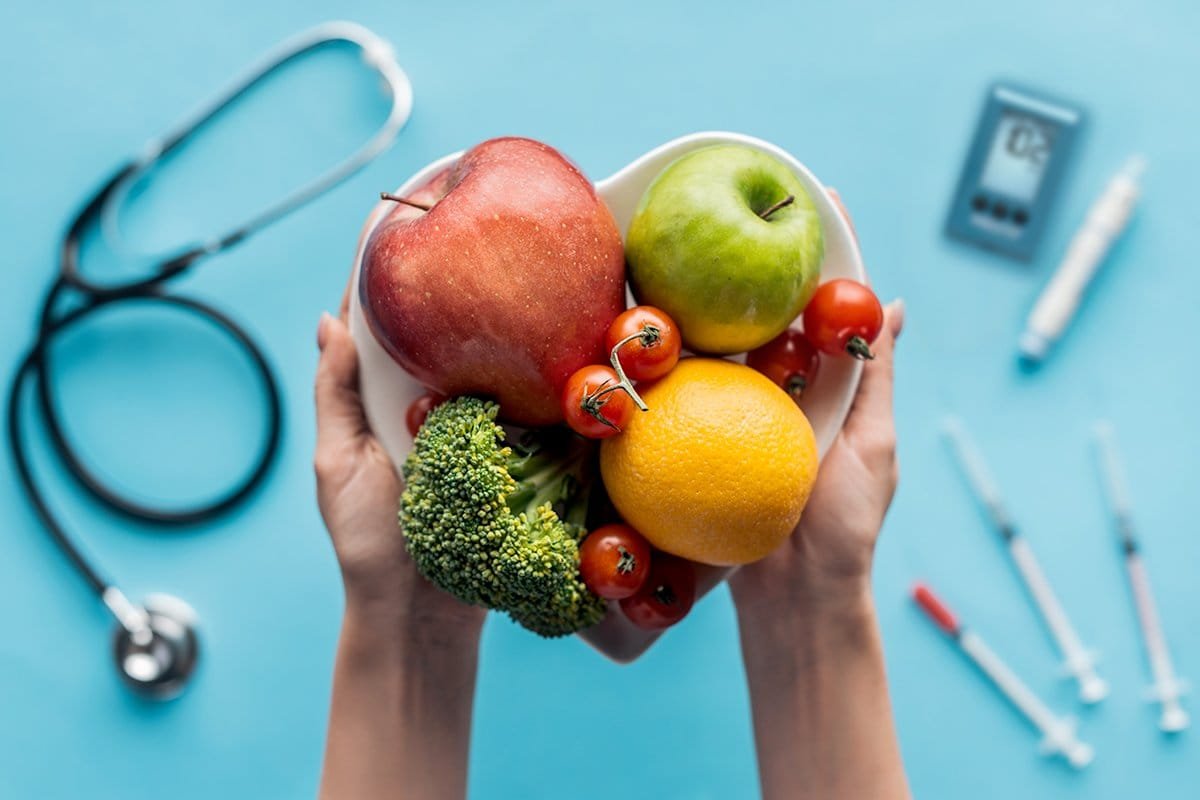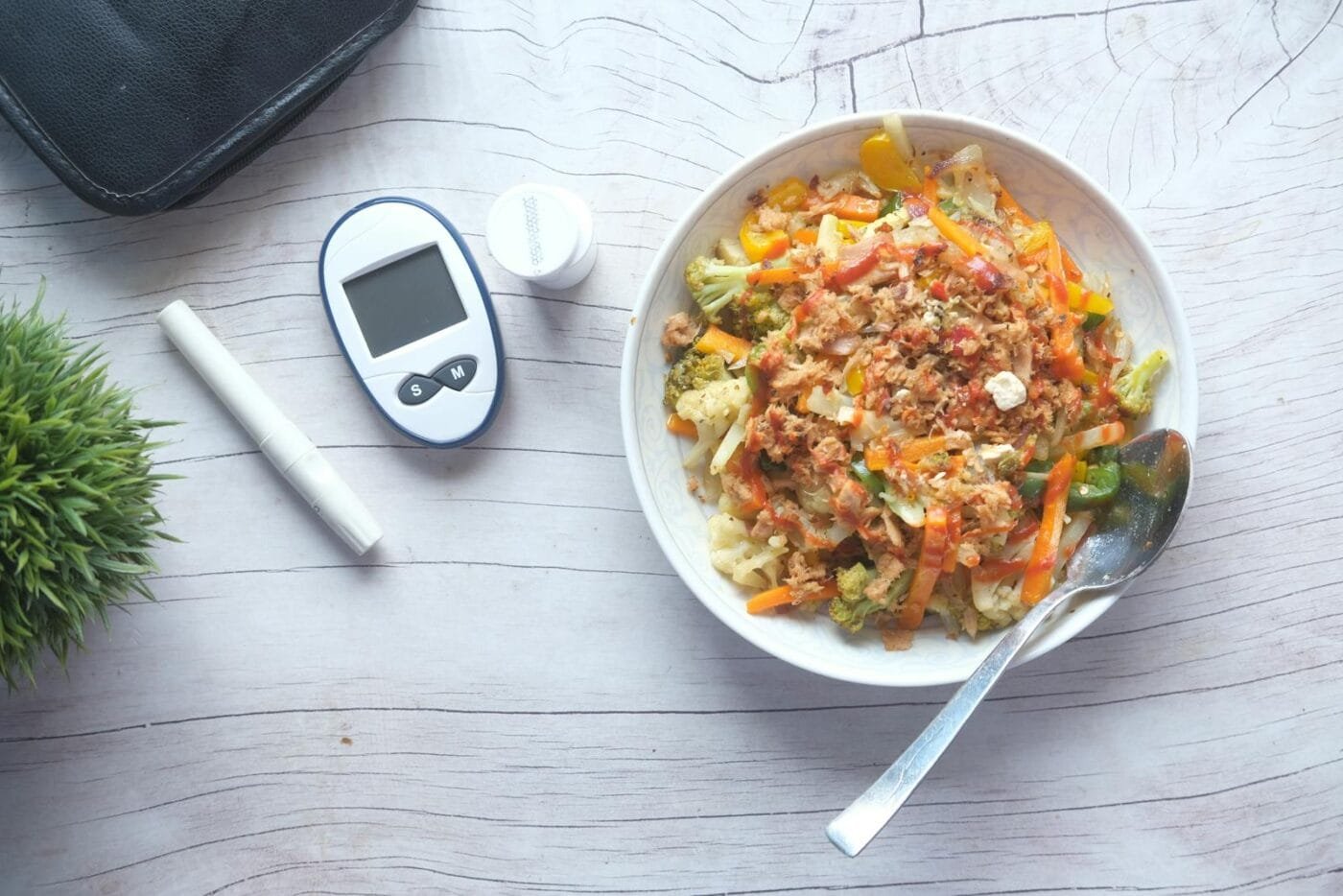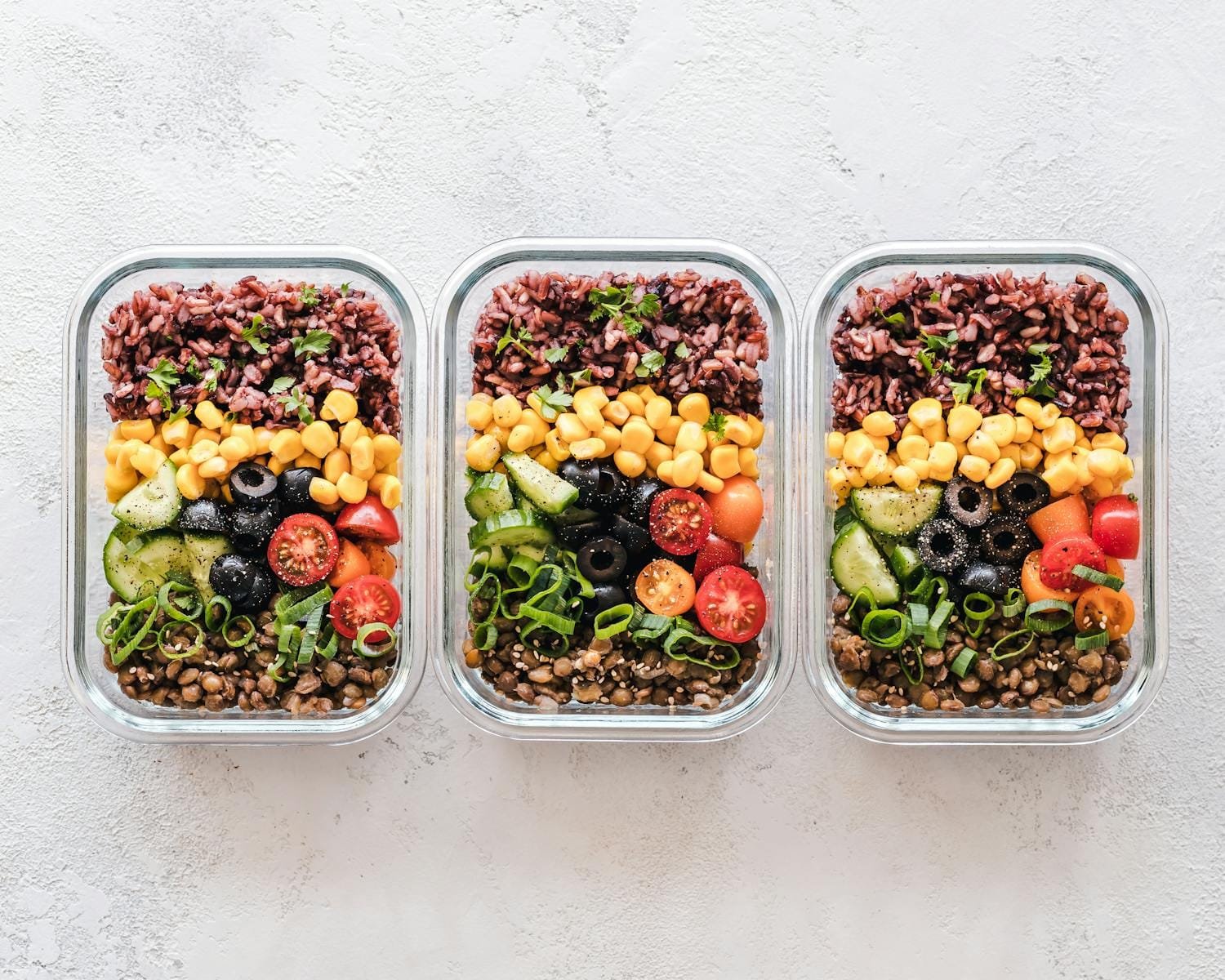Table of Contents
Living with diabetes doesn’t mean saying goodbye to delicious food. In fact, it’s all about embracing a mindful approach to eating that nourishes your body and keeps your blood sugar levels in check. I know, sometimes thinking about what to eat can feel overwhelming, like navigating a maze of restrictions and complicated rules. But trust me, it doesn’t have to be that way! That’s why I’ve put together a 7-day diabetic meal plan that’s not only healthy but also packed with flavor and variety.
Think of this plan as your friendly guide, a starting point to discover how enjoyable and satisfying diabetic meal plan can be. It’s designed to be flexible, adaptable to your tastes, and most importantly, sustainable. Let’s ditch the notion of bland, restrictive diets and jump into a week of vibrant, wholesome meals that will leave you feeling energized and in control.
This 7-day plan is built around the principles of balanced nutrition, focusing on whole foods, lean proteins, healthy fats, and plenty of fiber. We’ll be incorporating lots of colorful fruits and vegetables, whole grains, and lean protein sources to keep you full, satisfied, and help manage your blood glucose levels effectively. Remember, this is a sample plan, and it’s always best to consult with your doctor or a registered dietitian to personalize it to your specific needs and dietary preferences.

Let’s dive into our delicious and nutritious 7-day diabetic meal plan!
Your 7-Day Delicious & Nutritious Diabetic Meal Plan
Here’s a breakdown of what a typical week could look like. Remember to adjust portion sizes based on your individual calorie and carbohydrate needs.
Day 1: Monday – Start your week strong!
| Meal | Food | Description |
|---|---|---|
| Breakfast | Oatmeal with Berries and Nuts | 1/2 cup cooked rolled oats with 1/2 cup mixed berries (strawberries, blueberries, raspberries) and a tablespoon of chopped almonds. |
| Lunch | Chicken Salad Lettuce Wraps | 4 oz grilled chicken breast, diced and mixed with 2 tablespoons light mayonnaise, celery, and grapes. Served in crisp lettuce cups instead of bread. |
| Dinner | Baked Salmon with Roasted Vegetables | 4 oz baked salmon fillet seasoned with herbs, served with 1 cup roasted vegetables (broccoli, bell peppers, zucchini) tossed with olive oil and herbs. |
| Snacks | Apple slices with 2 tablespoons peanut butter, Small handful of almonds | Choose one snack in the mid-morning and one in the mid-afternoon. |
Day 2: Tuesday – Tasty & Easy
| Meal | Food | Description |
|---|---|---|
| Breakfast | Greek Yogurt with Fruit and Seeds | 1 cup plain Greek yogurt with 1/2 cup sliced peaches and 1 tablespoon chia seeds. |
| Lunch | Lentil Soup | 1.5 cups hearty lentil soup (made with vegetables like carrots, celery, onions, and lentils). Serve with a side salad of mixed greens with a light vinaigrette. |
| Dinner | Turkey and Vegetable Stir-fry with Brown Rice | 4 oz ground turkey stir-fried with 1.5 cups mixed vegetables (broccoli, carrots, snow peas) and a low-sodium stir-fry sauce. Served over 1/2 cup cooked brown rice. |
| Snacks | Baby carrots with hummus, Hard-boiled egg | Choose one snack in the mid-morning and one in the mid-afternoon. |
Day 3: Wednesday – Hump Day Healthy
| Meal | Food | Description |
|---|---|---|
| Breakfast | Whole-wheat Toast with Avocado and Egg | 1 slice whole-wheat toast topped with 1/4 avocado, mashed, and 1 poached egg. |
| Lunch | Tuna Salad on Whole-wheat Crackers | 4 oz canned tuna in water, mixed with 2 tablespoons light mayonnaise and celery. Served with 6 whole-wheat crackers and a side of cucumber slices. |
| Dinner | Chicken Breast with Quinoa and Steamed Green Beans | 4 oz baked or grilled chicken breast seasoned with herbs, served with 1/2 cup cooked quinoa and 1 cup steamed green beans. |
| Snacks | Pear slices with a slice of cheese, Small handful of walnuts | Choose one snack in the mid-morning and one in the mid-afternoon. |
Day 4: Thursday – Almost Friday!
| Meal | Food | Description |
|---|---|---|
| Breakfast | Smoothie with Spinach, Berries, and Protein Powder | 1 cup spinach, 1/2 cup mixed berries, 1 scoop protein powder (whey or plant-based), 1/2 cup unsweetened almond milk, blended until smooth. |
| Lunch | Leftover Chicken Breast with Quinoa and Steamed Green Beans (from Day 3) | Enjoy leftovers from dinner the night before! It’s a great way to save time and reduce food waste. |
| Dinner | Vegetarian Chili | 1.5 cups hearty vegetarian chili (made with beans, tomatoes, corn, and vegetables). Serve with a dollop of plain Greek yogurt and a sprinkle of chopped cilantro. |
| Snacks | Orange, Celery sticks with 2 tablespoons almond butter | Choose one snack in the mid-morning and one in the mid-afternoon. |
Day 5: Friday – Treat Yourself (Healthily!)
| Meal | Food | Description |
|---|---|---|
| Breakfast | Scrambled Eggs with Vegetables and Whole-wheat Toast | 2 scrambled eggs with 1/2 cup chopped vegetables (onions, peppers, spinach) and 1 slice whole-wheat toast. |
| Lunch | Salad with Grilled Shrimp | 4 oz grilled shrimp served on a bed of mixed greens with 1 cup non-starchy vegetables (cucumbers, tomatoes, bell peppers) and a light vinaigrette dressing. |
| Dinner | Baked Chicken with Sweet Potato Fries and Asparagus | 4 oz baked chicken breast seasoned with paprika and garlic powder, served with 1/2 cup baked sweet potato fries and 1 cup roasted asparagus spears. |
| Snacks | Handful of grapes, Cottage cheese (1/2 cup) | Choose one snack in the mid-morning and one in the mid-afternoon. |
Day 6: Saturday – Weekend Vibes
| Meal | Food | Description |
|---|---|---|
| Breakfast | Whole-wheat Pancakes with Berries and a dollop of Greek Yogurt | 2 small whole-wheat pancakes topped with 1/2 cup mixed berries and a dollop of plain Greek yogurt. Use sugar-free syrup if desired, in moderation. |
| Lunch | Leftover Baked Chicken with Sweet Potato Fries and Asparagus (from Day 5) | Enjoy leftovers from dinner on Friday! Again, it’s a win-win for saving time and reducing waste. |
| Dinner | Lean Ground Beef and Vegetable Skillet | 4 oz lean ground beef browned and cooked with 1.5 cups mixed vegetables (onions, peppers, mushrooms, zucchini). Season with herbs and spices. Serve as is, or over a small portion of quinoa or brown rice if needed. |
| Snacks | Small banana, Yogurt (plain, sugar-free, 1/2 cup) | Choose one snack in the mid-morning and one in the mid-afternoon. |
Day 7: Sunday – Relax and Recharge
| Meal | Food | Description |
|---|---|---|
| Breakfast | Omelet with Vegetables and a side of Whole-wheat Toast | 2-egg omelet filled with 1/2 cup chopped vegetables (onions, mushrooms, spinach) and a side of 1 slice whole-wheat toast. |
| Lunch | Salad with Canned Salmon | 4 oz canned salmon (skinless, boneless) flaked over a bed of mixed greens with 1 cup non-starchy vegetables (tomatoes, cucumbers, carrots) and a lemon vinaigrette dressing. |
| Dinner | Roasted Chicken and Root Vegetables | 4 oz roasted chicken (leg or thigh, skin removed) served with 1 cup roasted root vegetables (carrots, potatoes, parsnips – portion potatoes carefully). Season with rosemary and garlic. |
| Snacks | Rice cakes (2) with avocado slices, Small handful of mixed nuts | Choose one snack in the mid-morning and one in the mid-afternoon. |

Delicious Recipes to Get You Started
Let’s give you a little taste of how delicious diabetic-friendly cooking can be! Here are a couple of super simple recipes from the meal plan above.
1. Chicken Salad Lettuce Wraps (Day 1 Lunch):
This is a refreshing and light alternative to traditional chicken salad sandwiches.
- Ingredients:
- 4 oz grilled chicken breast, diced
- 2 tablespoons light mayonnaise
- 1/4 cup chopped celery
- 1/4 cup halved red grapes
- Salt and pepper to taste
- Large lettuce leaves (romaine or butter lettuce)
- Instructions:
- In a bowl, combine the diced chicken, mayonnaise, celery, and grapes.
- Season with salt and pepper to your liking.
- Spoon the chicken salad mixture into lettuce leaves.
- Enjoy immediately!
2. Baked Salmon with Roasted Vegetables (Day 1 Dinner):
A classic, healthy, and flavorful meal that’s easy to prepare.
- Ingredients:
- 4 oz salmon fillet
- 1 cup mixed vegetables (broccoli florets, bell pepper chunks, zucchini chunks)
- 1 tablespoon olive oil
- 1 teaspoon dried herbs (like oregano, thyme, or rosemary)
- Salt and pepper to taste
- Instructions:
- Preheat oven to 400°F (200°C).
- Toss the vegetables with olive oil, herbs, salt, and pepper on a baking sheet.
- Place the salmon fillet on the baking sheet alongside the vegetables.
- Bake for 15-20 minutes, or until the salmon is cooked through and the vegetables are tender.
3. Lentil Soup (Day 2 Lunch):
A hearty and comforting soup packed with fiber and protein. You can find tons of great lentil soup recipes online, or use a pre-made low-sodium version.
- Tips for a quick version: Use pre-cooked lentils (canned or pouches) and low-sodium vegetable broth to speed up the process. Sauté some onions, carrots and celery, add broth, lentils, diced tomatoes, and your favorite spices like cumin, coriander, and turmeric. Simmer until heated through.
Important Considerations for Your Diabetic Meal Plan
Managing diabetes is a highly personal journey, and your meal plan should reflect your unique needs and preferences. While following a structured plan is helpful, understanding the reasoning behind certain dietary choices empowers you to make informed decisions. Let’s delve deeper into some essential considerations for creating a sustainable and effective diabetic meal plan.
1. Portion Control is Key
Portion control is one of the cornerstones of managing diabetes. Even the healthiest foods, when consumed in large amounts, can lead to spikes in blood sugar. Start by familiarizing yourself with recommended serving sizes for different food groups. Use measuring cups, spoons, or a food scale to ensure accuracy, especially if you’re new to meal planning. Over time, you’ll develop a better sense of portion sizes intuitively. Additionally, adopting smaller plates can trick your brain into feeling satisfied with less food, helping you avoid overeating.
2. Carbohydrate Counting
Understanding carbohydrate intake is crucial, as carbs have the most significant impact on blood sugar levels. This meal plan offers general guidelines, but learning how to count carbohydrates can give you more flexibility and control. Familiarize yourself with carb-containing foods such as bread, rice, pasta, fruits, and dairy. Consider keeping a food diary or using apps to track your intake. If you’re on medication or insulin, consult with a healthcare provider or dietitian to tailor your carb intake to your treatment plan for optimal blood sugar control.
3. Fiber is Your Friend
Incorporating high-fiber foods into your meals can make a big difference in managing diabetes. Fiber slows the absorption of sugar into the bloodstream, helping to prevent spikes and crashes in blood sugar levels. Include plenty of whole grains, fresh fruits, vegetables, legumes, and nuts in your diet. Aim for at least 25-30 grams of fiber daily, and experiment with fiber-rich foods like quinoa, lentils, and chia seeds to keep your meals varied and satisfying.
4. Healthy Fats are Essential
Fats often get a bad reputation, but they are vital for overall health, including brain function and hormone production. Opt for healthy fats like avocados, nuts, seeds, olive oil, and fatty fish such as salmon or mackerel. These fats not only provide essential nutrients but also help keep you full longer, reducing the temptation to snack on less healthy options. Avoid trans fats and limit saturated fats, which can negatively impact heart health, a critical consideration for those with diabetes.
5. Hydration Matters
Staying hydrated is often overlooked, but it’s a simple and effective way to support your overall health. Water helps your body maintain proper blood sugar regulation and aids in digestion. Aim for at least 8-10 glasses of water a day, and consider drinking a glass before meals to help control appetite. If you struggle to drink enough water, try adding slices of lemon, cucumber, or mint for a refreshing twist. Limit sugary beverages and opt for unsweetened options like herbal teas or sparkling water.
6. Listen to Your Body
Everyone reacts differently to food, so it’s essential to pay close attention to how your body responds to different meals. Keep a food journal to note how specific foods impact your blood sugar levels and how you feel overall. Use this information to fine-tune your meal plan, identifying foods that work well for you and those that don’t. Remember, it’s a process of trial and error, and what works for someone else might not work for you.
7. Don’t Be Afraid to Swap
Flexibility is key to maintaining a sustainable diabetic meal plan. Feel free to make substitutions based on your preferences, dietary needs, or what’s available in your pantry. For instance, if a recipe calls for salmon but you prefer chicken or tofu, go ahead and make the swap. The goal is to create meals you enjoy while staying within the framework of a diabetes-friendly diet. Don’t hesitate to explore new recipes and experiment with spices and herbs to keep your meals exciting and flavorful.
By keeping these considerations in mind, you can build a meal plan that not only supports your health but also aligns with your lifestyle and tastes. Managing diabetes doesn’t mean giving up on delicious food – it means making thoughtful choices that empower you to live your best life.
“Let food be thy medicine and medicine be thy food.” – Hippocrates
This quote beautifully encapsulates the power of food to nourish and heal us. Embracing a healthy diabetic meal plan is an act of self-care and a proactive step towards managing your wellbeing.
Read More: 7 Worst Fruits for Diabetics: What to Avoid in Your Diet?
FAQs About Diabetic Meal Planning
Let’s tackle some common questions you might have about diabetic meal plan:
Q: Do I need to completely cut out carbs? A: No! Carbohydrates are an important source of energy. The key is to choose complex carbohydrates (like whole grains, fruits, and vegetables) over simple carbohydrates (like sugary drinks and processed snacks). Portion control is also crucial.
Q: Can I still eat fruit? A: Absolutely! Fruits are packed with vitamins, minerals, and fiber. Choose fruits in moderation and be mindful of portion sizes. Opt for whole fruits over fruit juices, as juices often lack fiber and can cause blood sugar spikes.
Q: What if I don’t like some of the foods in this meal plan? A: This meal plan is a template! Feel free to make substitutions based on your preferences. If you dislike a particular vegetable or protein, swap it out for something you enjoy that fits within the same nutritional category (e.g., swap broccoli for spinach, chicken for fish).
Q: How do I know if this meal plan is right for me? A: It’s always best to consult with your doctor or a registered dietitian. They can help you create a personalized meal plan that takes into account your individual health needs, medications, and lifestyle. This 7-day plan is a great starting point for discussion.
Q: Is this meal plan expensive? A: Not necessarily! Many of the foods in this plan are affordable and readily available. Focus on seasonal produce, plan your meals ahead to reduce food waste, and consider buying pantry staples in bulk.
Q: Can I eat out at restaurants while following a diabetic meal plan? A: Yes, you can! Plan ahead by checking menus online, choose healthier options (grilled, baked, steamed), watch portion sizes, and be mindful of sauces and dressings.
Take Charge of Your Health!
This 7-day diabetic meal plan is your stepping stone to a healthier, more energized you. Remember, managing diabetes is a journey, not a sprint. Be patient with yourself, experiment with different recipes, and find what works best for you. Embrace the deliciousness and nourishment that healthy eating offers, and enjoy the incredible benefits it brings to your overall well-being! You’ve got this!












1 Comment